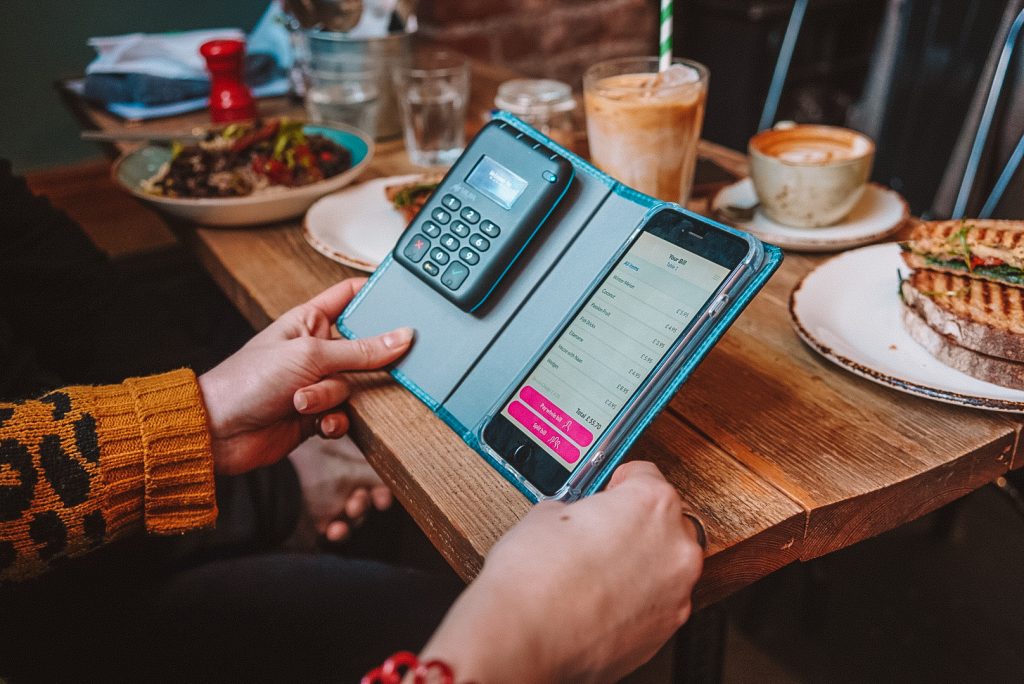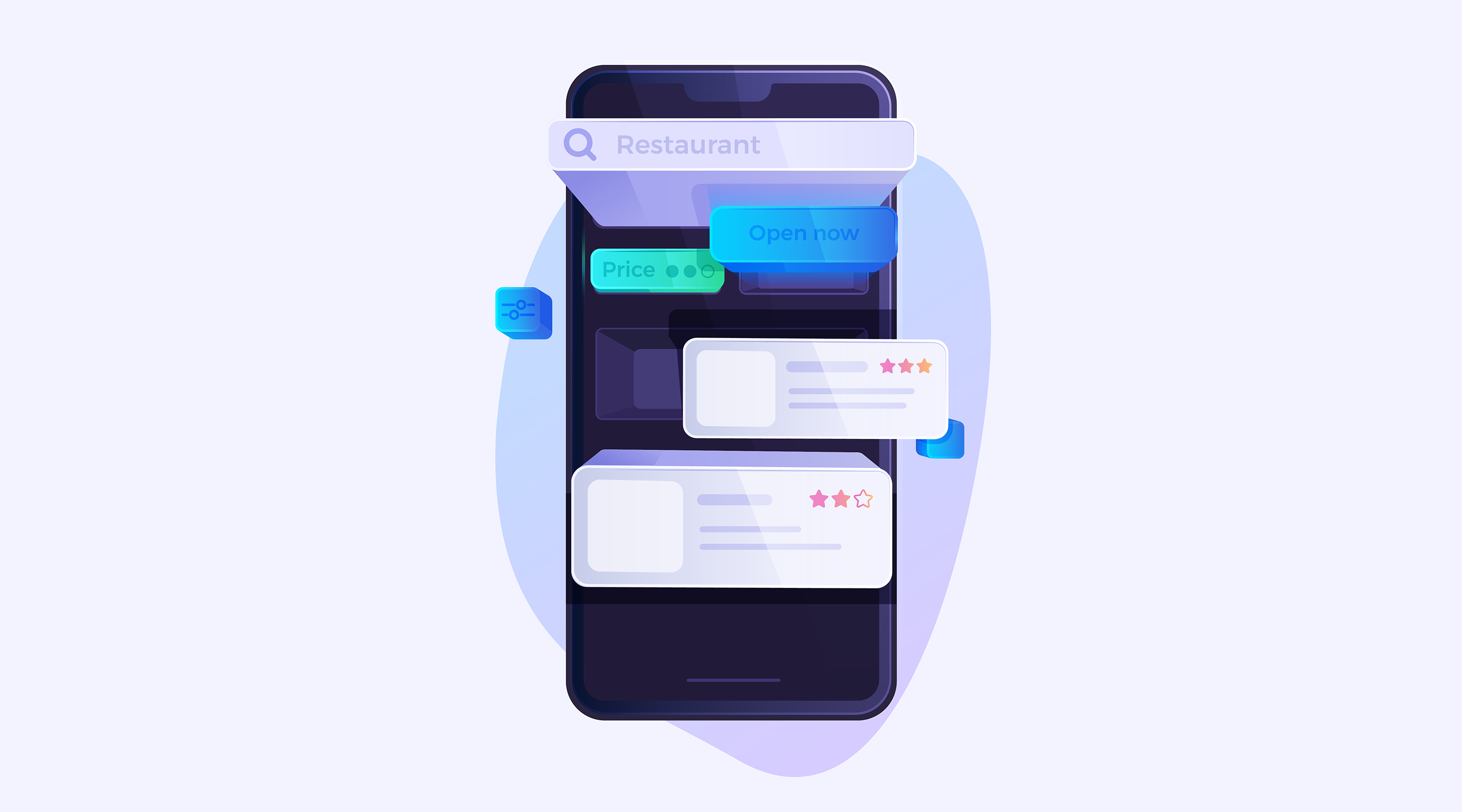E-mail marketing is a great way for restaurants to advertise online. It's more effective than social media and paid search, and it always pays off more. Studies show that for every $1 spent, email marketing generates an average return of $38.
Yet, many restaurants still underestimate the power of an email marketing strategy. Email can be used by restaurants to build meaningful connections with customers, drive repeat business, promote special events and discounts, announce menu changes, and stay top of mind in a crowded marketplace.
With a strategic email marketing approach, restaurants can increase brand awareness, website traffic, foot traffic to their brick-and-mortar locations, order values, customer loyalty and ultimately, revenue and profitability.
This guide will provide restaurants with actionable best practices and advanced tactics to master email marketing, engage existing customers and acquire new subscribers to grow their reach and revenue.

How to Build and Grow Your Restaurant's Email List.
A good email marketing program starts with a strong list of engaged subscribers. Your restaurant likely already has a captive audience of existing happy customers – the key is converting them into loyal email subscribers.
You also want to continuously grow your list by acquiring new subscribers. This establishes a pipeline of potential first-time customers who get to know your brand through your emails before ever stepping foot in your restaurant.
Welcome Email to New Subscribers
Subject: Welcome to the [Restaurant Name] community!
Preview text: Thanks for joining our email updates [First Name]! We can't wait to share specials, stories, and other surprises with you soon.
Email copy:
Welcome aboard [First Name]! We're so glad you signed up to stay informed on all things [Restaurant Name].
Expect a tasty mix of announcements on seasonal menu launches, weekend plans perfecting your plates, bartender tips, playlists to match your next meal, and more! You’ll be the first to hear of newly tapped kegs, popped Champagne corks, and flipped "Open" signs on our doors.
As a welcome, take 10% off your next order online or dine-in. Just enter code WELCOME10 at checkout. The kitchen awaits!
We promise each email will have exclusive insider info you won't find on our website or social pages. This is your VIP pass for personalized updates catered just for [Restaurant Name] lovers like yourself. Thanks for subscribing - now let's get to dinin'!
Effective Strategies for Email List Building
One popular approach to attracting more email subscribers is to offer an exclusive giveaway, discount, or gift when visitors sign up on your website or at your restaurant. For example, you could have customers take a photo with your floor standee frame upon subscribing and receive a 'Diner of the Month'-branded mug they can use for future coffee purchases.' Or make signing up for the list the only way to access early concert ticket sales for music events at your venue. Scarcity makes people want more, which makes them feel like they can't miss out on special access or swag.

Partners with neighborhood boutiques, ticketed attractions or activity companies can help expand your restaurant's reach. Give a freebie at the beginning to encourage people to share and collaborate on email lists. The other brand exposes you to their engaged audience, who likely dine out regularly close by. Sharing recommendations helps new people in the area who want to try a new and authentic restaurant.
As an example, you could work with a blow dry bar next door to give people a free appetizer welcome offer when they book a pre-dinner styling appointment.
- Offer incentives for joining your email list such as discounts, exclusive menu items or members-only specials. This encourages visitors to actively subscribe to receive ongoing perks and promotions.
- Make it easy to subscribe online and offline. Have a dedicated landing page for email signups on your website and social media channels. Also have signup forms on all printed menus, business cards and takeout packaging.
- Promote your email program prominently in-store with table tents, posters, flyers, and staff wearing email signup buttons. Capture emails at the point of sale too.
- Run social media and digital ads targeted to your location that lead to your email signup page. Retarget people who visited your website with ads, nurturing them to join your list.
- Partner with complementary local businesses to promote cross-channel incentives for subscribing to your email list. “Sign up for our email and receive 10% off your next purchase at [Partner Business].”
![16 Best Welcome Email Templates [2024]](https://moosend.com/wp-content/uploads/2021/02/home-chef-welcome-email-template.png)
Maintaining a Healthy and Engaged Email List
Simply capturing email addresses is not enough. You need to continually provide value to subscribers to keep them engaged, opening and reading your emails.
Here are tips for maintaining email list health:
- Send a welcome email to all new subscribers, introducing them to your brand story and upcoming email campaigns they can expect. Get them excited to receive future emails.
- Find the optimal email send frequency for your audience, aiming for at least 2 emails per month. Any less and they may forget about you. Too much may cause unsubscribes.
- Personalize email content when possible, using merge tags for first names. Segment your list based on past order data and preferences to tailor content.
- Make it easy to subscribe, unsubscribe or change preferences. Don’t force people to stay subscribed if they lose interest over time.
- Regularly purge non-responsive contacts from your list. If someone hasn’t opened in 6+ months, remove them to maintain deliverability rates.
- Monitor analytics not just on open and click rates, but on metrics like customer lifetime value from email. Identify your most loyal subscribers.
| Tactic | Best Practice |
|---|---|
| Welcome Email | Send to all new subscribers to orient them to your brand story and upcoming emails |
| Send Frequency | At least 2 emails per month finds optimal balance between excess and infrequent |
| Personalization | Use first names and order data to tailor email content where possible |
| List Management | Make it easy to change preferences or unsubscribe, regularly purge non-responsive contacts |
| Analytics | Track engagement and business metrics beyond just open and click rates |
Now let’s explore how restaurants can master the art of email storytelling and campaign design for maximum impact.
Telling stories in restaurant email campaigns.
Restaurants can tell their unique brand story to subscribers through email. Telling stories in emails makes people interested and explains why your restaurant does more than just serve good food.

Promoting a New Cocktail Menu
Subject: Cocktails coming in hot 🔥 Our new summer menu drops soon!
Preview text: A tantalizing lineup of new cocktails featuring fresh seasonal fruit is nearly ready for sipping! Check out a sneak peek of the menu now...
Email copy:
We've been shakin’ and stirrin’ up a storm this past month - finely tuning the creations you’ll soon be sippin' from our brand new cocktail menu. 🍸🙌
Exotic fruity flavors...inventive herbs and spices...smooth liquors and fizzy mixes crafted into thirst-quenching magic elixirs. We sourced specialty local ingredients to concoct a menu that screams summer in every taste.
Get a sneak peek at 3 cocktails coming to menus next Friday:
[Image: Watermelon Mojito featuring rum, watermelon, lime, mint leaves and soda water]
[Image: The Sicilian Sunrise with vodka, blood orange juice, sparkling wine, orange slice garnish]
[Image: Cucumber Jalapeño Margarita with tequila, muddled cucumber and jalapeños, agave nectar, lime juice]
Be the first to sample these refreshing new cocktail creations before we officially launch to the public. Make a reservation all next week to experience the exclusives as our mixology magicians put finishing touches for peak flavor.
Stay cool and refreshed with our summer cocktail oasis ready to transport your tasting experience to vacation mode! 🍹☀️ Who's ready for a little staycation?
Crafting Stories Around Your Menu and Brand
Use emails to tell the story of your culinary approach, sourcing standards, and preparation methods behind popular menu items. Feature your head chef discussing their inspiration.
Tell the story of how your restaurant started and how you help the area. Profile long-time patrons, explaining what draws them back to dine with you time and again.
Upcoming holidays, changing seasons, events space partnerships and staff highlights offer perpetual fuel for bite-sized stories to sprinkle throughout emails.
Email Promoting Special Mother's Day Brunch
Subject: Treat Mom to our Mother's Day brunch bonanza! 👩👧
Preview text: Give Mom an unforgettable brunch experience filled with thoughtfully curated dishes, bubbly cocktails, flowers and more!
Email copy:
Make Mother’s Day magical by reserving your table for our special brunch buffet prepared specially for the leading ladies in your life. 👩👧👧
Beyond the traditional breakfast dishes done right, we’ll feature seafood towers, carving stations with prime meats, bottomless mimosas, a decadent dessert bar and more! It's a bountiful feast honoring all mothers do.
We’ll welcome Moms with a vibrant floral bouquet for them to take home along with a commemorative photo of your crew. Capture the memories!
Seating fills up fast, so reserve your table today to lock in $$ off while space remains. Show Mom how much she means this Mother’s Day with an experience she’ll never forget! 💐
Successful Storytelling Email Campaigns
Here are two story-driven email campaign examples restaurants can replicate:
- Monthly Chef’s Spotlight: An interview-style Q&A with your head chef discussing what inspires their latest seasonal creations, favorite ingredients right now and surprising culinary experiments. Include photos of featured dishes and behind-the-scenes kitchen moments.
- Customer Loyalty Spotlight: Once a quarter, profile your most loyal or longest-tenured patron with a photo and quote on why they love your restaurant. Describe fond memories they’ve had over the years for a heartwarming story. Offer 10% off a future visit for them to redeem.
Sprinkling authentic stories into emails boosts brand affinity and gives existing customers fun new reasons to return for another memorable dining experience.

How to design and layout emails.
With crowded inboxes, you have just seconds to capture attention before email recipients disengage. Your restaurant branding, messaging consistency and email layout dramatically impacts results.
Designing Emails for Maximum Impact and Readability
Limit imagery to your most photogenic new dishes and clear calls-to-action, and don't distract with excessive promotions. Readability depends a lot on how you write it. Choose only two easy-to-read fonts for the headlines and body, with enough contrast between the colors in the background. Review the flow in plain-text format without images.
Follow these best practices for visually compelling emails:
- Lead with branded header images, reinforcing your restaurant’s unique personality and atmosphere. Make subscribers feel immersed.
- Chunk content into short paragraphs with ample white space between. Lists and headings help guide readers efficiently.
- Bold key information like featured dishes, event names and promotion details for skimmability.
- Link call-to-action buttons to your online ordering page or reservation system.
- Limit font styles to just one or two that are crisp and easily readable. Avoid fancy script fonts.
- Proofread rigorously with a co-worker to confirm links work, images display properly on all devices and the flow makes sense before sending.

Mobile Optimization for Restaurant Emails
Use mobile cameras to take extreme close-ups, but keep the size down so they don't delay loading. Enable pinch to zoom on details. Provide MP4 versions of GIFs that are often blocked on mobile. Make the CTA touch targets big enough to tap accurately. Confirm all buttons and links work cross-device.
With over 65% of emails now opened on mobile, optimization for smaller screens is a must.
Follow these mobile-focused design tactics:
- Test on actual devices, not just device simulators. Things display differently on iPhones versus Androids in the real world.
- Shrink image sizes so they don’t slow load times or get cut off on small screens.
- Check your preview text to ensure the email’s core value proposition makes sense out of context.
- Simplify more than you think necessary. Stick to single column layouts and minimal images to prevent crowded interfaces.
- Do not rely on hover effects, since most mobile users do not hover their finger over items. Assume everything is a tap interaction instead.
| Design Aspect | Best Practice |
|---|---|
| Branding | Lead with logo & branded header images |
| Content Structure | Short paragraphs & lists for skimmability |
| Readability | Consistent fonts, ample white space and bolding of key info |
| CTAs | Include buttons to online ordering, reservations etc. |
| Proofing | Double check links, images display properly on mobile |
| Mobile Testing | Test on actual iOS and Android devices, don’t just simulate |
Fine-tuning design and layout details may seem minor, but dramatically impacts email open rates, click-through rates and subscriber retention over the long run.

Analytics and advanced techniques.
Restaurants can improve their email marketing by A/B testing different email versions and looking at performance analytics.
How to test emails using A/B testing.
A/B testing means sending one version of an email (the A option) to half your list and a slightly different version (the B option) to the other half. You then see which one did better based on open rate, clicks, and other engagement metrics.
Aspects commonly tested via A/B approaches include:
- Email subject lines to identify what catalyzes opens
- Different header images and call-to-action placement
- Promotional language around offers and featured dishes
- Email content length (word count)
- Call-to-action button text, color, size etc.
Set up proper tracking UTM parameters to segment results in your email and web analytics tools. Identify the email design and content variations that directly lead to more customers walking through your doors or placing online orders.
Analyzing and Interpreting Email Campaign Data
Digging into email analytics provides incredibly actionable insights, but can feel overwhelming. Follow this framework when assessing your campaign results:
Stage 1: Email Campaign Benchmarks
- Unique Opens: Industry average = 20-25%. Goal = At least 25%+
- Click-Through Rate: Industry average = 2-5%. Goal = At least 8%+
- Bounce Rate: Goal = Less than 5% (bounces hurt sender reputation)
- Unsubscribe Rate: Goal = Less than 0.2% per campaign
Stage 2: Behavior Flow Analysis
- Identify paths where subscribers clicked from emails to your website. What content compelled them?
- See if email clicks convert into orders, both online and matched to point of sale systems.
- For in-store traffic driven by emails, check if they resulted in higher than average order values.
Stage 3: Longitudinal Business Impact
- Cohort analysis: Do contacts acquired from emails over time have higher customer lifetime value than other acquisition sources?
- Channel ROI: How much revenue is driven by email vs. other marketing channels quarter-over-quarter?
Continually optimizing through testing and analytics sets your restaurant’s email program up for long-term wins.
Conclusion: Continuously Improving Your Email Strategy
Email marketing remains one of the highest returning-on-investment digital channels for restaurants when executed strategically. Start by building a loyal list with incentives, nail email design basics, and immerse subscribers into your brand story.
Experiment with subject lines, layouts, and content via A/B testing to double down on what engages your customers best. Let data guide decisions as you scale your reach.
With an optimized email engine, your restaurant gains a reliable vehicle for driving repeat business, ecommerce sales and memorable dining experiences that build community around your brand.
FAQ
1. What email service provider do you recommend for sending restaurant marketing emails?
For most small restaurants, I recommend using Mailchimp to manage your email campaigns and subscriber lists. Mailchimp offers generous free tiers allowing up to 2,000 subscribers and 12,000 emails per month, ample for getting started. Paid Mailchimp plans are affordable too for expanded capacity needs with advanced features like customer journey reporting. The platform is user-friendly for restaurants without dedicated marketing teams. Mailchimp also has a strong delivery reputation, ensuring your emails reliably reach inboxes rather than getting flagged as spam.
Other email service providers like Constant Contact and Campaign Monitor are also very restaurant-suitable. Evaluate options to see which platform and plan aligns best with your email subscriber goals and growth roadmap.
2. How much time should go into designing and writing each marketing email?
Ideally, dedicate 2–3 hours per marketing email campaign when first launching your restaurant email initiative. This allows sufficient time to brainstorm compelling content themes aligned to promotions or announcements, write drafts, design any necessary imagery and review everything thoroughly before sending.
As you establish templates and processes, you can likely manage production of subsequent emails in 60–90 minutes. Reuse content blocks where appropriate, repurposing images through your email library. Just avoid feeling rushed—provide your marketing emails the attention they warrant.
3. What is an optimal email send frequency and time for restaurants?
The ideal email frequency is every 1–2 weeks, aiming for at least 2 emails per month. Sending once a week risks inundating people, but no less than biweekly maintains continuity. Any lower, and subscribers may forget they signed up.
Regarding day and time, Tuesdays and Wednesdays between 11am–3pm tend to see higher open and click rates for restaurants. Avoid weekends when emails get buried. Monday mornings also work for those wanting to plan dinners early in the workweek.
Ultimately, you will find certain days and times that resonate best with your local subscriber audience, so experiment!
4. How important are branded templates vs. constantly changing email design?
Maintain consistent branding in elements like your header, footer, logo placement and core color scheme across every email. Subscribers will come to instantly recognize your emails.
However, regularly refresh layouts with different section formatting, new enticing background images, evolving color palettes, and continuous headlines every 4–6 emails. Keep things familiar yet fresh.
5. What's an example of starter loyalty incentive to motivate email signups?
Rather than generic discounts which can erode long-term value perception, make the initial signup offer something experiential. For example, offer new email subscribers:
“Sign up to receive priority access to our new handcrafted Summer Cocktail Menu one week before the public release.”
This establishes exclusivity out the gates. The incentive drives subscribers to your location to hopefully have a wonderful experience raving about your inventive new cocktail lineup to friends. It sparks organic word of mouth promotion.
6. How can you convince restaurant owners skeptical of investing in email marketing?
Share case studies of similar restaurants who generated serious revenue growth after strategically focusing on email marketing. For example, highlight Chef Michael Schlow's TICO restaurants, which get over 50% of their entire reservations pipeline driven by email campaigns.
Emphasize lifetime customer value metrics, showing email subscribers visit 24% more often on average and spend 13% more per order. Calculate potential incremental visits and reorder value email can drive based on their existing customer base size. The ROI usually far outweighs additional staff time invested.
7. What are important email marketing metrics beyond just open and click rates?
While open and click-through rates mark subscriber engagement, relate email performance to actual business outcomes:
- Increases in reservations or online orders directly attributed to send
- Higher average spend for customers acquired via email vs. other sources
- Email-driven retention, showing their increased visits and order frequency over time
These business metrics make the ROI case for email's revenue growth contributions.
8. How can restaurants uplift mobile optimization for emails?
With the majority of opens on mobile, continuously evaluate emails on iOS and Android devices during creation rather than just desktop previews. Check the user flow, clicking every link.
Also register your website for Google's Mobile-Friendly Test, receiving recommendations on improvements for better mobile site functionality. Slow load speeds or awkward navigation on mobile undermines the email to website experience.
9. What separates high-quality restaurant email content from the rest?
Stellar restaurant email content balances creativity and consistency. Develop campaigns bringing your brand storytelling to life rather than overly promotional language. But also showcase genuine warmth through anniversary wishes or staff highlights, resonating on a personal level. Ultimately, provide utility via helpful recommendations that simplify patrons' dining decisions. Content quality comes through in insightful, unexpected and delightful ways.
10. How can I expand my local restaurant's email reach beyond existing customers?
Your current loyal customers represent just a fraction of potential diners in the wider area. Grow beyond by:
- Obtaining opt-in signage at nearby shops frequented before dining like boutiques, bookstores, or markets. Offer discounts cross-promoting one another.
- Running geotargeted social media and web ads with messages for people near your restaurant to join updates from their neighborhood spot.
- Email list partnerships with complementary businesses like cooking classes or wine shops, inviting their subscribers to also join your list for specials.
Expanding through local community marketing taps into new diners. Just ensure relevance in send frequency and content to avoid disengaging wider groups slower to convert to loyal customers.






